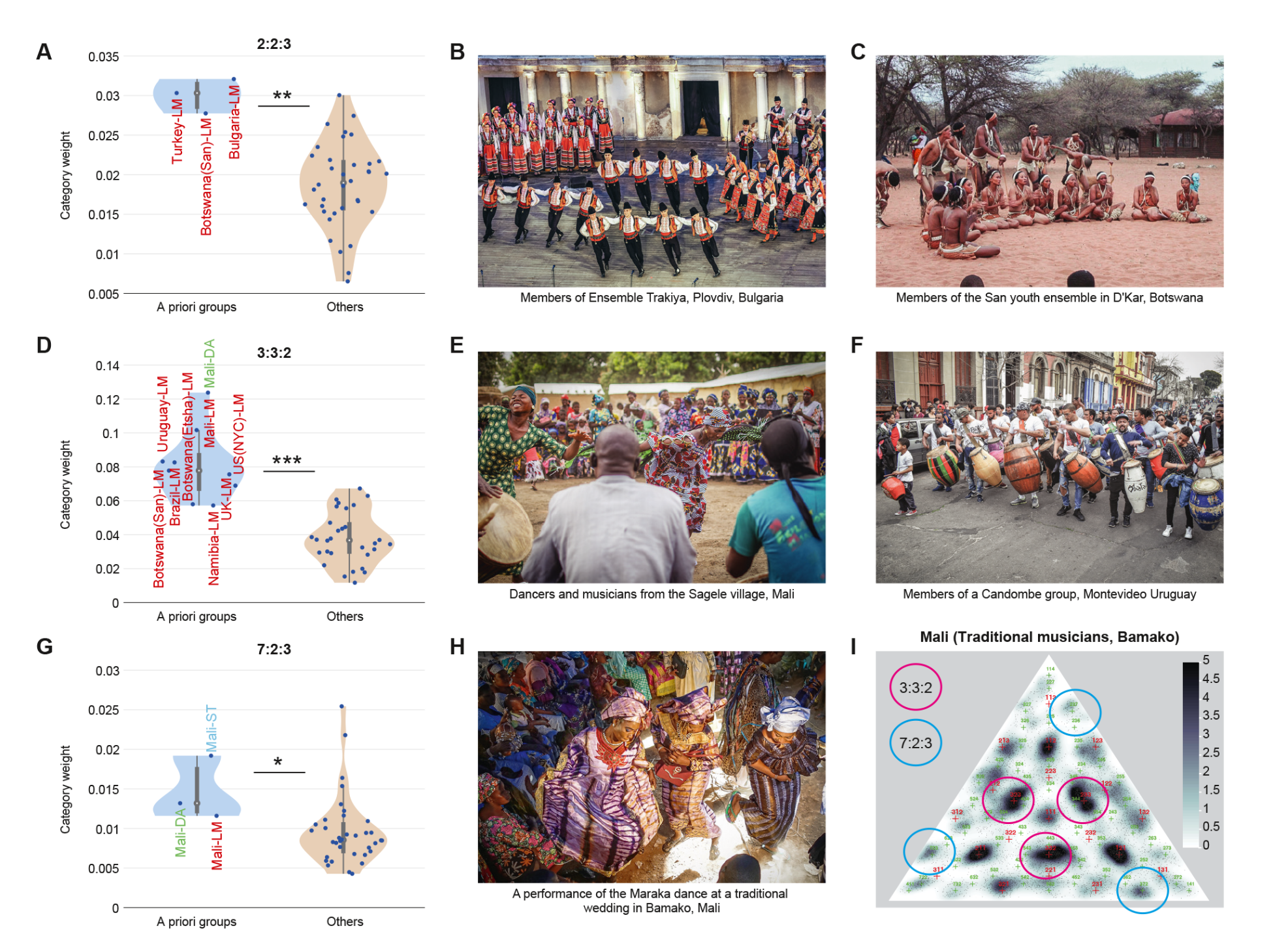Commonality and variation in mental representations of music revealed by a cross-cultural comparison of rhythm priors in 15 countries
Universality and culture-specific variation in mental representations of rhythm, as revealed by a study involving more than 900 participants in 15 countries across 5 continents.
Nori Jacoby, Rainer Polak, Jessica A. Grahn, Daniel J. Cameron, Kyung Myun Lee, Ricardo Godoy, Eduardo A. Undurraga, Tomás Huanca, Timon Thalwitzer, Noumouké Doumbia, Daniel Goldberg, Elizabeth Margulis, Patrick C. M. Wong, Luis Jure, Martín Rocamora, Shinya Fujii, Patrick E. Savage, Jun Ajimi, Rei Konno, Sho Oishi, Kelly Jakubowski, Andre Holzapfel, Esra Mungan, Ece Kaya, Preeti Rao, Mattur Ananthanarayana Rohit, Suvarna Alladi, Bronwyn Tarr, Manuel Anglada-Tort, Peter M. C. Harrison, Malinda J. McPherson, Sophie Dolan, Alex Durango, and Josh H. McDermott
March 2, 2024
Nature Human Behaviour

Abstract
Music is present in every known society, yet varies from place to place. What is universal to the perception of music? We measured a signature of mental representations of rhythm in 923 participants from 39 participant groups in 15 countries across 5 continents, spanning urban societies, indigenous populations, and online participants. Listeners reproduced random ‘seed’ rhythms; their reproductions were fed back as the stimulus (as in the game of “telephone”), such that their biases (the prior) could be estimated from the distribution of reproductions. Every tested group showed a priorwith peaks at integer ratio rhythms, suggesting that discrete rhythm “categories” at small integer ratios are universal. The occurrence and relative importance of different integer ratio categories varied across groups, often reflecting local musical systems. However, university students and online participants in non-Western countries tended to resemble Western participants, underrepresenting the variability otherwise evident across cultures. The results suggest the universality of discrete mental representations of music while showing their interaction with culture-specific traditions